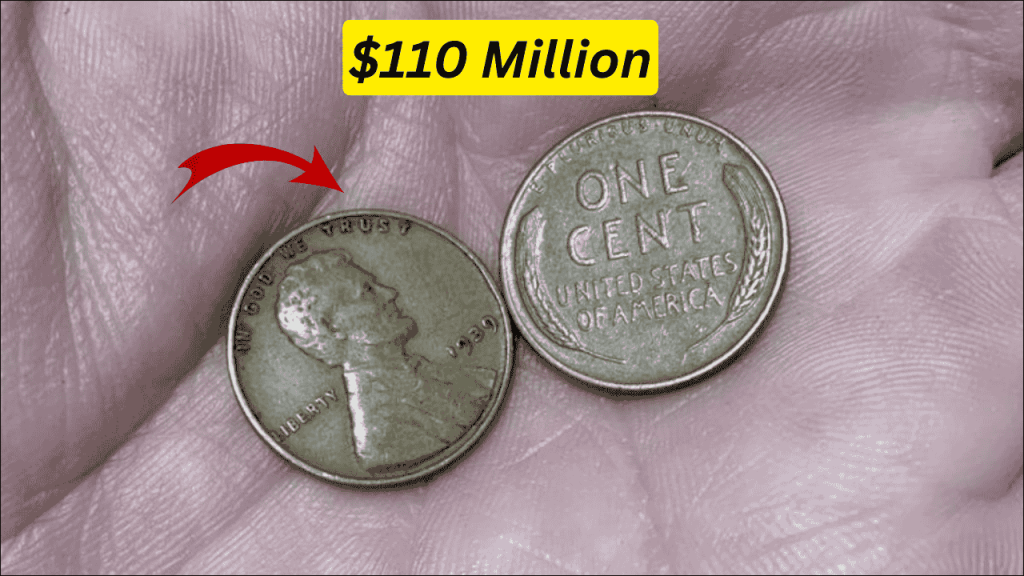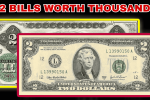
In the elite world of numismatics, few items capture the imagination quite like the Lincoln Wheat Penny valued at an astounding $110 million. This seemingly humble coin stands as potentially the most valuable single piece of currency in American history. What makes this story particularly captivating is that similarly valuable pennies could still be circulating unnoticed in everyday transactions, waiting for an observant individual to discover them.
The Origins of an American Icon
The Lincoln Wheat Penny made its debut in 1909 as part of the U.S. Mint’s commemoration of President Abraham Lincoln’s centennial birth anniversary. Crafted by artist Victor D. Brenner, the coin featured Lincoln’s distinguished profile on the obverse (front) side, while the reverse displayed two wheat stalks symbolizing America’s agricultural wealth and prosperity. This classic design remained in production until 1958, when it was succeeded by the Lincoln Memorial design that most Americans are familiar with today.
A Wartime Error Creates Numismatic History
The extraordinary valuation of this particular Lincoln Wheat Penny stems from a remarkable wartime manufacturing error. During World War II, copper became a strategic metal essential for producing military equipment and ammunition. To conserve this vital resource, the U.S. Mint transitioned from copper to zinc-coated steel for penny production in 1943.
However, in the changeover process, a few copper planchets (the metal discs that become coins when struck) were inadvertently left in the minting machines. When these copper blanks were struck with 1943 dies, they created what would become some of the most sought-after coins in American numismatic history. The rarity of these pennies—combined with their historical significance and exceptional condition—has driven their value to astronomical heights.
Understanding the $110 Million Valuation
The specific Lincoln penny believed to command this unprecedented price represents a perfect storm of numismatic value factors:
- Extreme Rarity: The coin features a unique minting error combined with its copper composition in a year when virtually all pennies were made from steel, potentially making it one-of-a-kind.
- Historical Significance: It represents a tangible artifact from America’s wartime production efforts during a pivotal moment in world history.
- Exceptional Condition: The coin is believed to be in “mint state” condition with minimal wear or damage, dramatically increasing its value.
- Collector Demand: Intense competition among elite collectors for such extraordinary pieces has driven the price to levels few other collectibles can match.
This combination of factors has created what many consider the ultimate prize in American coin collecting.
Identifying Valuable Wheat Pennies in Your Collection
For everyday people hoping to discover valuable Lincoln Wheat Pennies in their own possession, several key characteristics merit attention:
Critical Dates to Watch For
- 1909-S VDB: Featuring designer Victor D. Brenner’s initials, with limited production at the San Francisco mint
- 1914-D: A key date with low mintage from the Denver facility
- 1922 (No Mint Mark): A famous error where the Denver mint mark was accidentally omitted
- 1943 Copper: The legendary wartime error pennies
- 1955 Doubled Die: Features visible doubling of the design elements due to a minting error
Authentication Methods
For suspected 1943 copper pennies, simple tests can help with preliminary identification:
- Magnet Test: Genuine 1943 copper pennies will not stick to a magnet, unlike their steel counterparts
- Weight Check: Copper pennies weigh approximately 3.11 grams, while steel versions weigh about 2.7 grams
- Year Verification: Examine the date carefully, as altered dates from other years are common forgeries
Professional authentication remains essential for confirming the authenticity and value of any potentially significant find.
Beyond the Ultra-Rare: Other Valuable Wheat Pennies
While the $110 million specimen represents the zenith of Lincoln Wheat Penny values, other varieties can still command life-changing sums:
- Authenticated 1943 copper pennies regularly sell for $100,000 to $1.7 million depending on condition and mint mark
- The 1914-D penny can be worth over $100,000 in excellent condition
- The 1922 No Mint Mark penny might fetch $25,000 to $50,000
- The 1955 Doubled Die penny can command $25,000 to $80,000 in top condition
Even more common wheat pennies in exceptional condition can be worth significantly more than their face value, making any wheat penny worthy of closer examination.
The Enduring Appeal of the Hunt
The possibility that extraordinarily valuable pennies might still be in circulation maintains an enduring fascination among both dedicated collectors and casual observers. While discovering a $110 million specimen would be remarkably improbable, other valuable wheat pennies do occasionally surface in unexpected places—from forgotten coin jars and inherited collections to ordinary cash registers and pocket change.
This potential for discovery transforms an everyday transaction into a possible treasure hunt that anyone can participate in without specialized knowledge or equipment. The accessibility of this pursuit—requiring nothing more than attention to detail when handling loose change—contributes to its widespread appeal.
A Legacy Beyond Monetary Value
Beyond their financial worth, these rare Lincoln pennies represent tangible connections to pivotal moments in American history. The 1943 copper penny specifically embodies America’s industrial mobilization during World War II and the sacrifices made on the home front to support the war effort.
Each wheat penny tells a story of the era in which it was produced, from the early 20th century commemorating Lincoln’s legacy through the Great Depression, World War II, and into the post-war prosperity of the 1950s. This historical significance adds a dimension of value that transcends mere monetary worth.
Important Considerations for Collectors
For those inspired to examine their own coin collections more carefully, several important caveats should be kept in mind:
- The coin market fluctuates based on condition, authenticity, and collector demand
- Professional authentication is essential for any potentially valuable coin
- Many replicas and altered coins exist in the marketplace
- Investment decisions should never be made solely on speculative values
While the thrill of possibly discovering a rare coin adds excitement to numismatics, the historical appreciation and collecting enjoyment typically provide the most reliable rewards.
Conclusion
The $110 million Lincoln Wheat Penny stands as a testament to how seemingly ordinary objects can possess extraordinary value under the right circumstances. Its remarkable story continues to inspire collectors and casual observers alike to pay closer attention to the coins that pass through their hands every day.
Whether or not one ever discovers a rare penny of significant value, the search itself offers an accessible entry point into the rich world of numismatics and American history. In this way, the legendary 1943 copper penny has achieved something beyond monetary worth—it has kept alive the romantic notion that extraordinary treasure might be hiding in plain sight, waiting for someone observant enough to recognize it.
Note: Coin values mentioned are based on historical sales and current market estimates but may vary significantly based on condition, authenticity, and market demand. Professional authentication is essential for determining the value of any potentially valuable coins.

